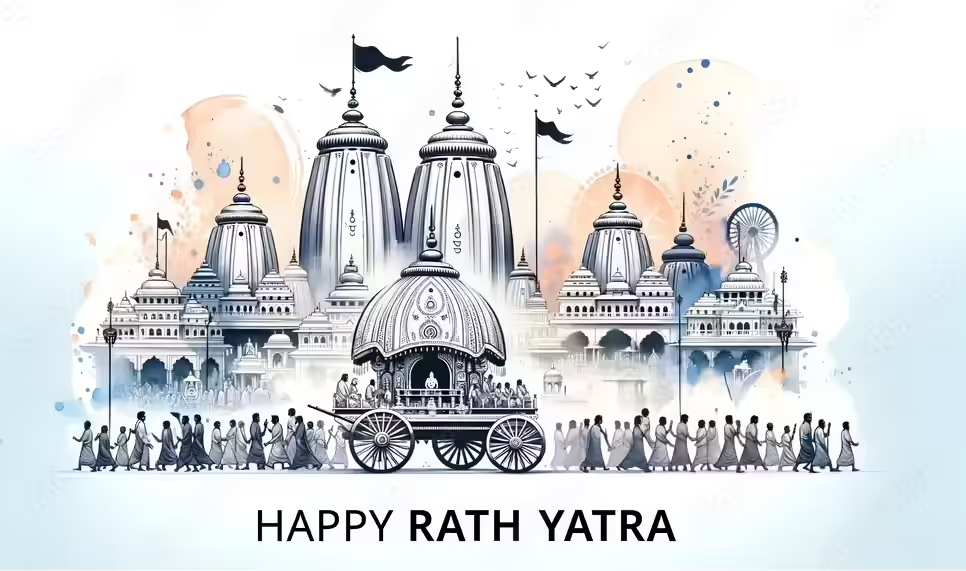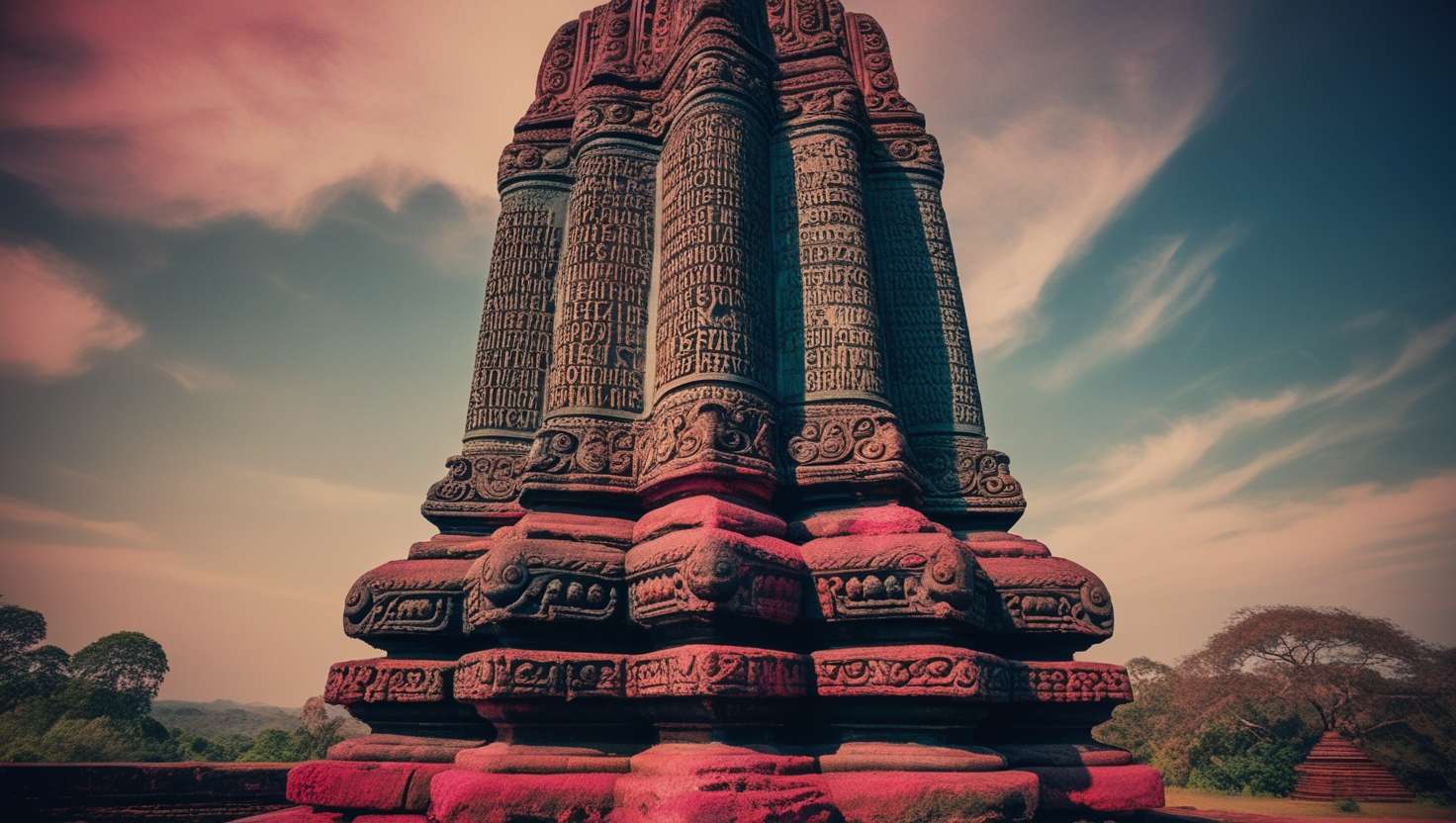Table of Contents
ToggleKey Highlights
- Rath Yatra 2024, also known as the Chariot, is a grand celebration of tradition and culture.
- The festival is centered around Lord Jagannath, who is believed to be the incarnation of Lord Vishnu.
- The highlight of the festival is the magnificent chariots that are pulled by devotees using long ropes.
- The chariots have massive wheels and are beautifully decorated, attracting a large amount of crowd from all over India.
- Rath Yatra is not only a religious affair but also a cultural extravaganza that showcases the rich heritage of Puri.
Introduction
The Rath Yatra, also known as the Chariot Festival, is a grand celebration of tradition and culture that takes place in Puri, Odisha. It is one of the most significant and oldest festivals in India, drawing millions of devotees and tourists every year. The festival is dedicated to Lord Jagannath, who is believed to be the incarnation of Lord Vishnu.
The Rath Yatra marks the divine journey of Lord Jagannath, along with his siblings Lord Balabhadra and Goddess Subhadra, from the Jagannath Temple to the Gundicha Temple, which is their aunt’s abode. The journey covers a distance of approximately 3 kilometers and is undertaken on elaborately decorated chariots. The festival happens on the second day of the new moon in June or July, based on the Hindu calendar.
The Rath Yatra holds immense religious and cultural significance for the people of Puri. It is believed that participating in the procession and getting a glimpse of the deities brings blessings and ensures a prosperous year ahead. The festival also promotes unity and brotherhood, as people from different social structures and parts of the world come together to celebrate.
The Historical Significance of Rath Yatra
Origins and Legends Associated with Rath Yatra
The story of Rath Yatra comes from old tales and myths. According to one legend, Lord Jagannath, Lord Balabhadra, and Goddess Subhadra were invited by their aunt to visit her in the Gundicha Temple. The deities agreed to the invitation and embarked on a journey in grand chariots.
Another popular legend associated with Rath Yatra is the story of Lord Krishna and his siblings. It is believed that Lord Krishna, Lord Balarama, and Goddess Subhadra wanted to visit their birthplace Mathura. To fulfill their desire, the deities are taken on a chariot procession, replicating Lord Krishna’s journey from Gokul to Mathura.
These stories have been shared for ages, and people still celebrate Rath Yatra with a lot of excitement and energy. The festival holds immense religious and cultural significance for the people of Puri and attracts devotees from all over the world.
The Evolution of Rath Yatra Over Centuries
The Rath Yatra has evolved significantly over the centuries, with records of its celebration dating back to ancient times. Historical records suggest that the festival was first mentioned in the Skanda Puran, Brahma Puran, and Padma Puran, all of which are Hindu scriptures.
The Puri Rath Yatra has undergone various changes and modifications over the years. The chariots used in the procession have become grander and more elaborate, attracting a larger number of devotees and tourists. The festival has also become more organized, with stringent security measures and crowd management techniques in place.
Despite these changes, the essence of the Rath Yatra remains the same – to celebrate the divine journey of Lord Jagannath and seek his blessings. The festival continues to be a symbol of devotion, unity, and cultural heritage, making it one of the most significant and anticipated events in India.
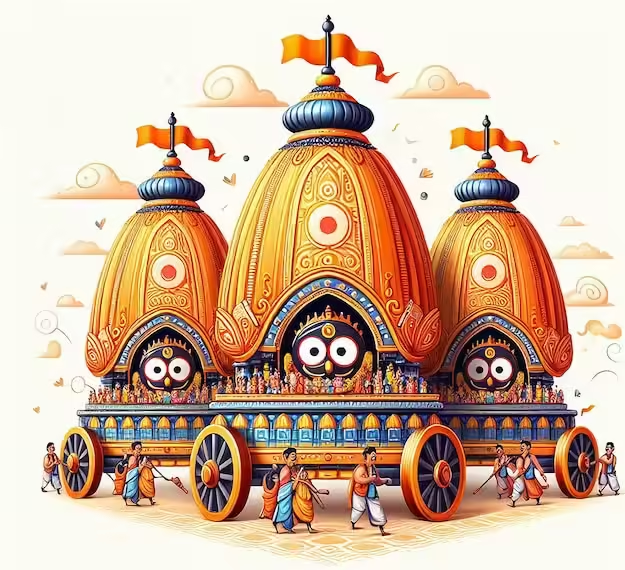
Preparations for Rath Yatra 2024
The preparations for Rath Yatra 2024 begin months in advance. The Gundicha Temple, where the deities will reside during the festival, undergoes extensive cleaning and decoration. Local artists and artisans are engaged to create intricate designs and motifs for the chariots.
Skilled craftsmen craft the chariots using traditional techniques and materials. The chariots are adorned with vibrant colors, intricate carvings, and decorative elements. The entire process is a testament to the rich craftsmanship and artistry of the region.
The devotees also actively participate in the preparations by offering prayers and making donations. The enthusiasm and devotion of the people contribute to the grandeur and success of the Rath Yatra.
Crafting the Chariots: A Time-Honored Tradition
The crafting of the chariots for the Rath Yatra is a time-honored tradition that requires meticulous craftsmanship and attention to detail. Skilled artisans and craftsmen are involved in the construction of the chariots, which are made entirely of wood. Lord Jagannath’s chariot, called Nandighosa, is the largest and tallest of the three chariots.
It has 16 massive wheels and a height of 44 feet. Lord Balarama’s chariot, called Taladhwaja, has 14 wheels and a height of 43 feet. Goddess Subhadra’s chariot, known as Darpadalana, has 12 wheels and a height of 42 feet. The chariots are intricately decorated with vibrant colors, carvings, and motifs.
They symbolize the divine abode of the deities during their journey from the Jagannath Temple to the Gundicha Temple.The craftsmanship and artistry involved in the construction of the chariots are highly admired and revered.
The Role of Artisans and Priests in Rath Yatra
The Rath Yatra involves the active participation of artisans and priests who play a crucial role in the smooth conduct of the festival. The priests perform rituals and ceremonies to ensure the sanctity of the entire event. The temple chanting by the priests creates a divine atmosphere and elevates the spiritual energy of the devotees.The religious affair attracts millions of people who come from far and wide to witness the grand procession.
The King of Puri, who is a descendent of the Royal Family of Orissa, holds a prominent role in the Rath Yatra. He is the only person who has the authority to bring the deities out of the Jagannath Temple and perform the rituals associated with the festival. It is believed that his role in sweeping the chariot and decorating it signifies the equality of all individuals in the eyes of the Lord.
Key Events During Rath Yatra 2024
Rath Yatra 2024 is marked by several key events that add to the grandeur and significance of the festival. These events include Snana Purnima, Pahandi Bije, and Chhera Pahanra.
Snana Purnima is the ceremonial bathing of the deities before the start of the Rath Yatra. The idols get a special bath and are kept away from everyone until the day of the parade.
Pahandi Bije is the procession of the deities from the sanctum sanctorum to the chariots. The idols are carried on the shoulders of the priests and are placed in the respective chariots.
Chhera Pahanra is the ritual of sweeping the chariots by the King of Puri. This bath is a way to show everyone is equal in the Lord’s eyes and is a big part of Rath Yatra.
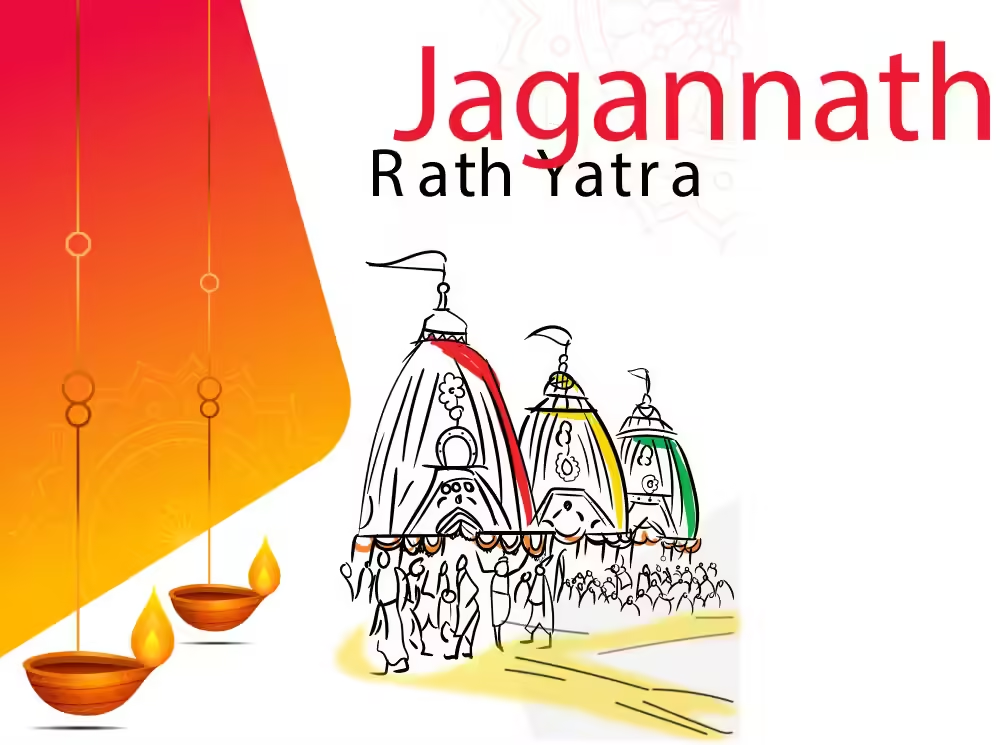
Snana Purnima: The Ceremonial Bathing
Snana Purnima, also known as the Bathing Festival, is a significant event that takes place before the start of the Rath Yatra. On this day, the idols of Lord Balabhadra, Goddess Subhadra, and Lord Jagannath are bathed in 108 pitchers of special water. The bathing ceremony takes place in a special enclosure called the Snana Bedi.
The idols are brought to the Snana Bedi and are bathed with various auspicious substances, including milk, sandalwood paste, and herbal waters. The bath is believed to cleanse and purify the deities, preparing them for the grand festival ahead.
After the bathing ceremony, the idols are kept in isolation for a period of 15 days. During this time, they are considered ill and are not allowed to be seen by the devotees. This period of isolation is seen as a period of rejuvenation and healing for the deities.
Pahandi Bije: The Procession of Deities
Pahandi Bije is a key moment when the gods move from the temple to their chariots. The idols of Lord Jagannath, Lord Balabhadra, and Goddess Subhadra are carried on the shoulders of the priests amidst chants and devotional songs. The procession takes place on the grand thoroughfare known as Bada Danda.
Devotees throng the streets to catch a glimpse of the deities and seek their blessings. The atmosphere is filled with joy, devotion, and excitement as the procession moves forward. Pahandi Bije is a visually stunning event, with the deities gracefully swaying on the shoulders of the priests. The devotees consider it a privilege to be able to witness this sacred procession and consider it a moment of great spiritual significance.
Chhera Pahanra: The Sweeping of the Chariots
Chhera Pahanra is a key part of Rath Yatra. It involves the sweeping of the chariots by the King of Puri, who is considered the highest authority over the Jagannath Temple. The King of Puri, a descendent of the Royal Family of Orissa, performs this ritual with great devotion and reverence. He sweeps the chariots using a golden handle broom, symbolizing purity and divine blessings.
The act of sweeping is accompanied by chanting and prayers. Chhera Pahanra signifies the equality of all individuals in the eyes of the Lord. It serves as a reminder that irrespective of one’s social status or background, everyone is treated equally in the presence of the divine. The ritual is deeply ingrained in the traditions and customs of the Rath Yatra and is eagerly awaited by the devotees.
The Chariots of Rath Yatra 2024
The chariots used in the Rath Yatra are a visual delight and a marvel of craftsmanship. The three chariots, dedicated to Lord Jagannath, Lord Balabhadra, and Goddess Subhadra, are meticulously crafted and beautifully decorated. Lord Jagannath’s chariot, known as Nandighosa, is the largest and tallest among the three.
It has 16 massive wheels and stands at a height of 44 feet. The chariot of Lord Balabhadra, named Taladhwaja, has 14 wheels and a height of 43 feet. Goddess Subhadra’s chariot, called Darpadalana, has 12 wheels and a height of 42 feet. The chariots are pulled manually by devotees using long ropes.
The devotees consider it a great honor and privilege to participate in pulling the chariots as it is believed to bring good deeds and penance for their errors. The sight of the massive wheels and the synchronized efforts of the devotees create a mesmerizing spectacle during the Rath Yatra.
Design and Symbolism of the Chariots
The design and symbolism of the chariots used in the Rath Yatra hold deep significance and represent various aspects of the deities. Each chariot is dedicated to a specific deity and showcases unique characteristics. Lord Jagannath’s chariot, Nandighosa, represents the cosmic form of the Lord.
It is adorned with colorful fabrics and motifs, symbolizing the divine presence of Lord Jagannath. Goddess Subhadra’s chariot, Darpadalana, represents femininity and grace. It is decorated with vibrant colors and floral designs, reflecting the beauty and elegance of the goddess.
Lord Balarama’s chariot, Taladhwaja, represents strength and power. It is embellished with intricate carvings and symbols, signifying the divine attributes of Lord Balarama. The design and decoration of the chariots are meticulously planned to capture the essence of the deities and create a visually captivating experience for the devotees.
The Journey of the Chariots: Route and Traditions
The journey of the chariots during the Rath Yatra follows a specific route that holds great significance. The procession begins at the Jagannath Temple in Puri and proceeds towards the Gundicha Temple, which is the aunt’s abode of the deities.
The distance between the two temples is approximately 3 kilometers, but due to the large amount of crowd, it takes a couple of hours for the chariots to reach the Gundicha Temple. On the return journey, known as Bahuda Yatra, the procession halts at the Mausi Maa Temple.
The deities are offered Poda Pitha, a sweet pancake, which is said to be Lord Jagannath’s favorite food. This tradition symbolizes the divine bond between the deities and their aunt. The journey of the chariots is a symbolic representation of the divine journey of Lord Jagannath, and it is eagerly awaited by devotees and tourists alike.
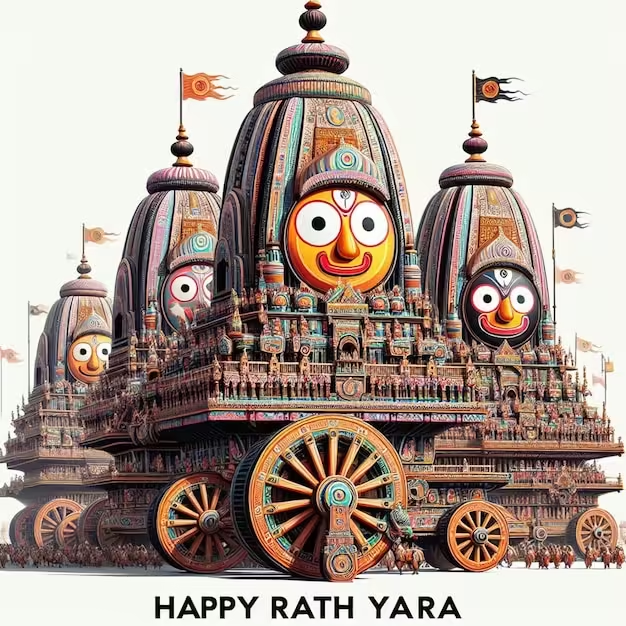
Cultural Impact of Rath Yatra
- The Rath Yatra has deep roots in Hindu Puranas and is considered a sacred event in the Hindu calendar.
- Participating in the Rath Yatra and witnessing the idols of Lord Jagannath, Lord Balabhadra, and Goddess Subhadra is believed to bring good deeds and blessings.
- The festival holds immense cultural significance as it showcases the unity and brotherhood among people from different social structures and parts of the world.
- It’s all about keeping traditions alive, having faith, and celebrating Odisha’s deep cultural roots.
Rath Yatra's Influence on Arts and Music
- The Rath Yatra has a profound influence on arts and music in Puri.
- Local artists play a significant role in decorating the chariots and creating intricate designs and artwork.
- Traditional music and chants fill the air during the procession, adding to the festive atmosphere.
- The festival becomes a platform for artists to showcase their talent and contribute to the preservation of the region’s cultural heritage.
Culinary Traditions Associated with Rath Yatra
Rath Yatra is also a celebration of culinary traditions, with various local delicacies prepared during the festival.
Puri is known for its unique cuisine, and during the Rath Yatra, special festival foods like Poda Pitha (a sweet pancake) are prepared.
These foods mean a lot and are given to Lord Jagannath during the festival.
The culinary traditions associated with the Rath Yatra reflect the rich food culture of the region and add to the overall festive experience.
How Rath Yatra Strengthens Community Bonds
The Rath Yatra is not just a religious event but also a community celebration that strengthens bonds among people.
The festival encourages active community participation, with individuals coming together to pull the chariots and take part in the procession.
This collective effort fosters a sense of unity and camaraderie among the participants.
The Rath Yatra has a positive societal impact, promoting inclusivity and reinforcing the importance of community in the fabric of society.
The collective participation in the Rath Yatra plays a crucial role in fostering social cohesion and unity among the participants.
People from all walks of life come together to contribute to the festival, regardless of their social status or background.
The act of pulling the chariots together symbolizes the unity and equality of all individuals in the eyes of the Lord.
This collective effort not only strengthens community bonds but also promotes a sense of social responsibility and harmony.
Planning Your Visit to Rath Yatra 2024
Planning a visit to the Rath Yatra requires careful consideration of accommodation, travel arrangements, and attendee preparation. It is advisable to book accommodation in advance, as hotels in and around Puri tend to get fully booked during the festival.
Travelers should also familiarize themselves with the dos and don’ts of attending the Rath Yatra and follow festival etiquette. It is recommended to check the official dates and timings of the festival and make necessary travel arrangements accordingly.
Accommodation and Travel Tips
- Puri offers a range of accommodation options, including hotels, resorts, and holiday homes, to cater to the influx of visitors during the Rath Yatra.
- It is advisable to book accommodation well in advance to secure a place to stay during the festival.
- For transportation, Puri is well-connected by road, rail, and air.
- Travelers can choose the mode of transport that suits their convenience and budget.
- Hiring local transportation or using public transport within Puri is recommended, as it can be challenging to navigate through the crowds during the festival.
Conclusion
In conclusion, Rath Yatra is not just a festival but a symbol of tradition, culture, and community unity. Its rich history and deep-rooted customs make it a significant event that brings people together in celebration and devotion.
As we eagerly anticipate Rath Yatra 2024, let’s remember the essence of this grand festival and the values it upholds. From the crafting of majestic chariots to the vibrant cultural impact it has, Rath Yatra stands as a testament to the collective spirit and harmony that transcends boundaries.
If you are planning to witness this spectacular event, immerse yourself in the rituals, music, and flavors that define this auspicious celebration.
FAq's
The Rath Yatra in Puri is held in the month of Ashada (June-July) according to the Hindu calendar. The best time to visit Puri during the Rath Yatra is around this period to witness the grandeur of the festival.
International tourists can participate in the Rath Yatra by immersing themselves in the cultural experience and joining the procession. It is recommended to familiarize themselves with the festival rituals and customs to fully appreciate and respect the significance of the event.
Attendees of the Rath Yatra should ensure they follow safety measures such as staying hydrated, wearing comfortable clothing, and protecting themselves from the sun. It is advisable to carry necessary medications and be aware of the nearest medical facilities in case of any health emergencies.
